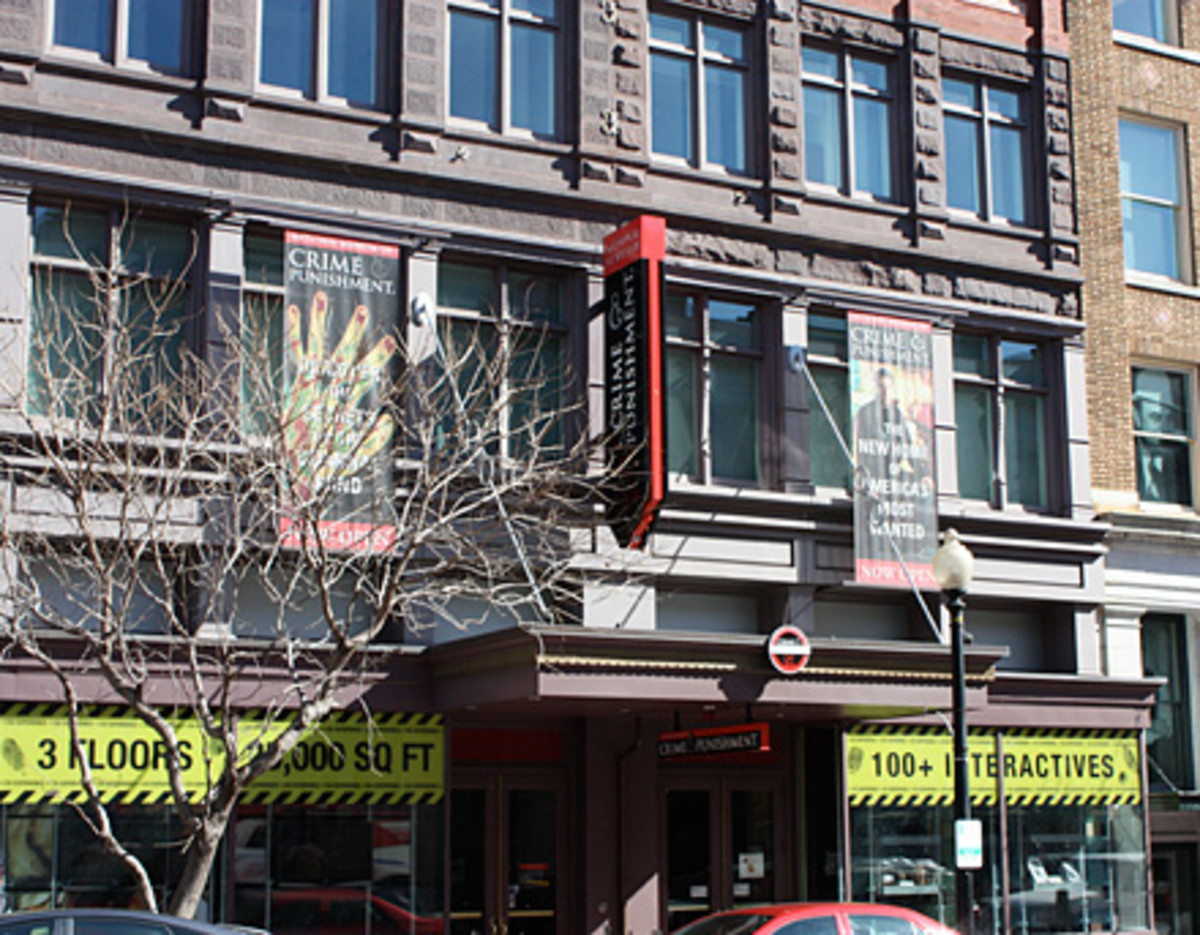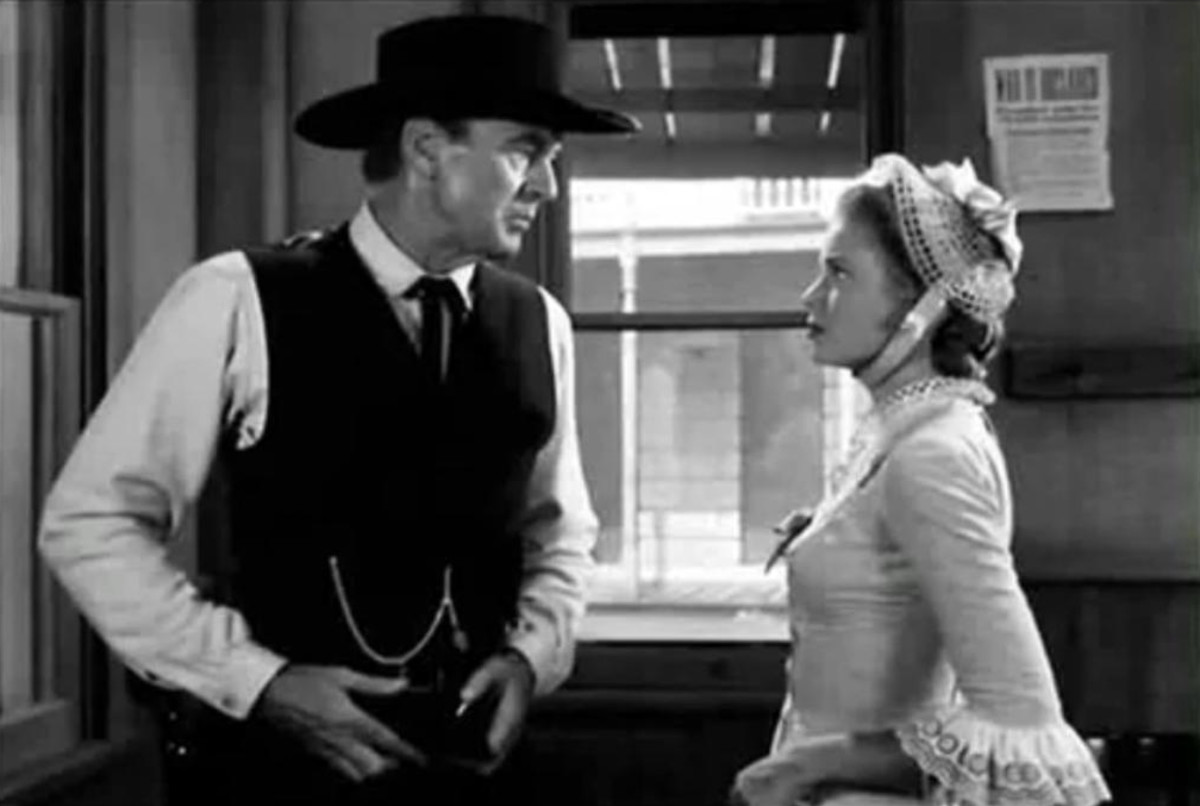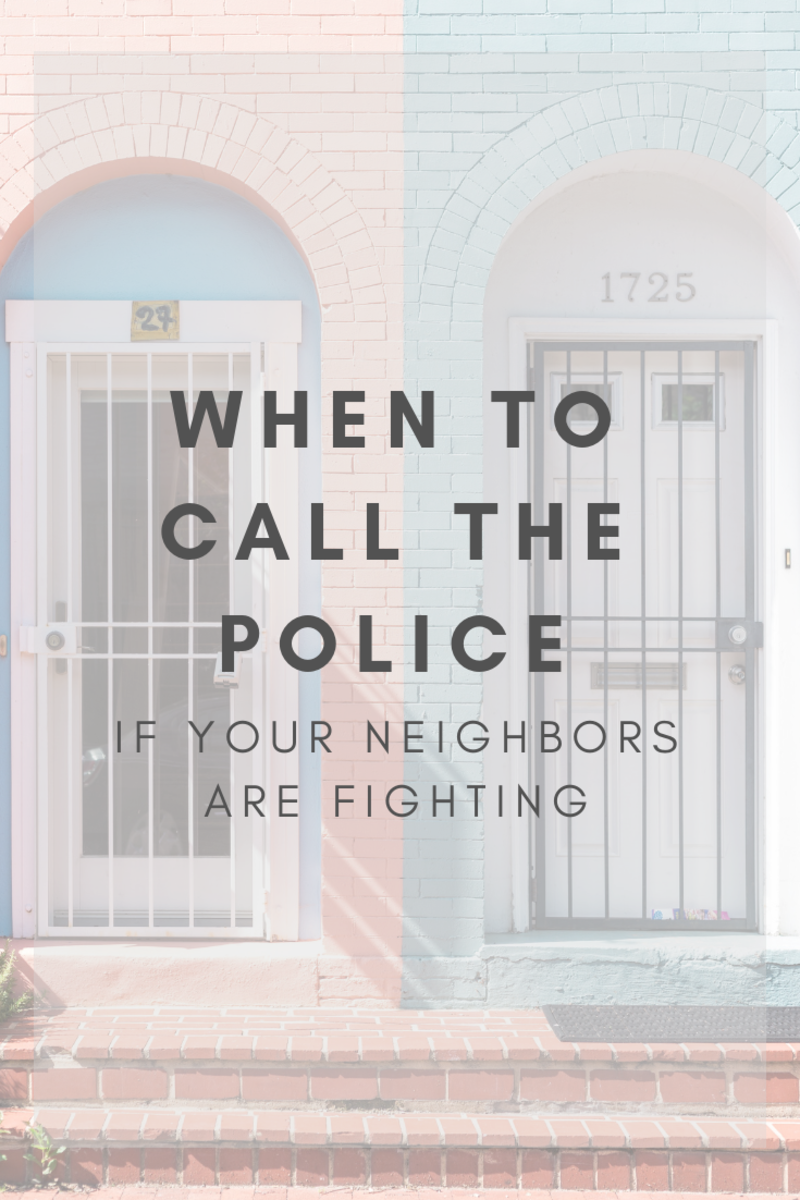COPS: Community Oriented Policing Services

by Amber Maccione
One of the issues in regards to crime prevention is the relationship between law enforcement and the community in which it serves. Law enforcement agencies sometimes get a bad reputation as people who interfere with the general public instead the wanted reputation of people who serve and protect the general public. We may ask ourselves why it is that way. I think there are two reasons why law enforcement gets the wrong reputation: 1) when an officer or group of law enforcement agents break the law and it is aired on T.V. and 2) lack of relationship between the general public and the law enforcement agencies. The later is where the focus needs to be – building up the relationship between the general public and law enforcement through community oriented policing, better known as COPS.
There were two quotes that accurately convey the need for community oriented policing: 1) “‘The 1st thing to understand is that public peace… of cities is not kept primarily by police…. It is kept primarily by an intricate, almost unconscious network of voluntary controls and standards among the people… and enforced by the people’ (Jacobs, 1966)” (Hunter 2004) and 2) “‘Where [community involvement] has been properly obtained, the people are much more secure. Where they are secure, they are closer to the ideal created by the founders of this Republic. And, where they are secure, the torch of freedom is burning brightly’ (Davis, 1977)” (Hunter 2004). The goals behind community oriented policing is to bring peace and reduce fear, create a system of communication that unites the community with law enforcement, and to create and maintain safety within every community so that we as a community, state, and nation can live in freedom.
What is COPS?
The United States Department of Justice has created an office in which is dedicated to these goals: Community Oriented Policing Services (COPS). This branch of our Department of Justice works to “advance the practice of community policing in America’s state, local, tribal law enforcement agencies by sharing information and making grants to police departments” (COPS 2012). This program is based of the philosophy that “promotes organizational strategies, which support the systematic use of partnerships and problem-solving techniques, to proactively address the immediate conditions that give rise to public safety issues such as crime, social disorder, and fear of crime” (COPS 2012). There are three components to this philosophy: 1) community partnerships, 2) organizational transformation, and 3) problem solving (COPS 2012).
Community partnerships are “collaborative partnerships between law enforcement and the community to develop solutions and increase trust in the police (COPS 2012). You can see these types of partnerships in every community through local schools having resource officers, neighborhood watch groups, police working with local businesses to maintain order (i.e. night clubs, bars, sporting events, concerts), and with the media.
Organizational transformation is the “alignment of organizational management, structure, personnel, and information systems to support community partnerships and proactive problem solving” (COPS 2012). This has to do with how our law enforcement in every community is arranged. Each law enforcement agency has to think about its management (labor relations, decision making, policies, evaluations, hiring and training, etc.), how it will use its finances and resources to assign officers to assignments and geographic locations, and their communication system (data websites – accessing them and accuracy of them) (COPS 2012). In order for the law enforcement agencies to be strong and able to do their part in community oriented policing, they need to make sure that their own system’s structure is beyond reproach and orchestrated in such a way that it can work with the community to its best potential.
Lastly, the philosophy requires problem solving: “a process of engaging in proactive and systematic examination of identified problems to develop and rigorously evaluate effective responses (COPS 2012). Problem solving requires us to understand the crime triangle of how the location of the crime, the offender, and the victim all fit together. Problem solving involves scanning (identifying and prioritizing the problems), analysis (researching what we know about a specific problem), response (developing working solutions for the problem), and assessment (evaluate the success of the solution used to fix the problem) (COPS 2012).
Examples of COPS at Work
In 2004, the United States created the Violent Crime Control and Law Enforcement Act of 1994, which gave Federal support to state and local law enforcement agencies in their attempts to prevent crime (Travis 1998). This Act opened the door for community oriented policing to evolve. This Act also opened the door for the COPS division of our Department of Justice to develop and be funded so it can give grants to state and local law enforcement agencies as they go about developing programs that will help prevent crime while building the relationship between police and neighborhoods (Travis 1998). In the city of Orlando (where I live presently), our police department has been big on developing neighborhood watch programs in order to keep Orlando a safe city (Orlando Police Department 2005). The goal of the neighborhood watch groups is to create safe neighborhoods and promote crime prevention education (Orlando Police Department 2005). In order for a neighborhood to get a neighborhood watch program in their neighborhood, they need to contact the Orlando Police Department Neighborhood Watch Unit to come out to train the members that will make up your neighborhood watch group. You then will have to select a block captain who is responsible for setting up meetings and relaying information to the rest of the group. The group is also responsible for recruiting members to the neighborhood watch and updating its records so the community stays informed (Orlando Police Department 2005).
Recently, an adjacent community (Sanford, Florida) had an issue with a neighborhood watch group because one individual in that group decided to take on the role of a law enforcement officer instead of following the rules behind having a neighborhood watch (The Trayvon Martin/George Zimmerman Case). It is important to know what a neighborhood watch is responsible for and what they are allowed to do so that it works correctly and helps law enforcement rather than creates more problems. The purpose of a neighborhood watch is to prevent crime and promote safety, not the other way around. In the Orlando area, members are instructed to serve as extra eyes and ears for law enforcement. They are to report observations of suspicious activity by calling 911. They are never to take action on their observations because they are not trained law enforcement (Orlando Police Department 2005).
Another way that Orlando has tried to build relationships between law enforcement and communities is to have patrol officers assigned to certain communities and to also have a crime prevention officer in each city commission district (Orlando Police Department 2005). The patrol officers are responsible for knowing their area and the issues that are important to the residents and visitors. They are also responsible for developing solutions to problems and setting up neighborhood watches to encourage the communities to help them build a safe, crime free environment to live in (Orlando Police Department 2005).
Bernard Melekian who serves as a director for the office of community oriented policing services has stated that COPS is very beneficial and successful with preventing crime. In Houston, Texas, they have a program called T.A.P.S. which uses funds to have police mentor at-risk youths (Melekian 2012). By having the police work with the youth, it helps builds report between law enforcement and the community by getting law enforcement to build a relationship with persons that may be at a higher risk to commit crimes into their adulthood. This program helps identify persons on the road to a life of crime, catch them early, and build a positive relationship between a group of persons that might otherwise have a negative perspective of law enforcement. Another program that Melekian praised was in Allentown, Pennsylvania, where they took ten community officers to solely deal with the reduction of rape (Melekian 2012). And then in Racine, Wisconsin, they created a community policing housing program. This program has police officers buy homes in high crime areas. Then the police work in that area to reduce crime. They then turn around and resell the homes they bought to families in need (Melekian 2012).
T.A.P.S.
Technology & COPS
Not only have programs been created through COPS, but also technology has been a huge aspect of community oriented policing. We are all familiar with 911. It has been around for thirty years now and is used daily to inform law enforcement agencies that there are emergencies that need their attention. One issue that comes with this phone system though is people calling in issues that are really emergencies. Baltimore Police Department created a solution to this by creating another phone system. By calling 311 in that area, people could report non-emergency issues. This system reduced the 911 calls by one third which allowed law enforcement to focus more on the emergency issues (Chandek 1999).
Another technology advance in the phone area was auto-dialing alert network, which is better known as reverse 911. This system allows law enforcement to send pre-recorded messages to every household phone in a pre-defined area. These messages contained information about crime trends in the area, suspicious persons, and may have also suggested ways to reduce victimization (Chandek 1999).
Recently in the news, there has been another way to encourage community oriented policing. The new technology is a free web based program that connects neighbors to each other and to local law enforcement. This new program is called Uneighbors (United Neighbors and Community). It has been implemented so far in Brevard and Indian River Counties here in the Florida area and has plans to be released to all of Florida soon. The system is set up so that neighbors and law enforcement are able to send out alerts via phone or email. Residents in the area that the system is being used are able to alert neighbors anonymously by phone, email, or automated phone calls of any activity that they think may be criminal or suspicious. Law enforcement is able to respond to alerts or send their own alerts out. They can also take the information from one neighborhood and send out other alerts to adjacent communities that could also be affected by that information. The system also links with the state sex offender database to alert the communities of offenders living in a one mile radius of their homes. The goal of this system is to increase community involvement. It stays free because it is paid for by advertising that shows up on the website pages and the printed out materials. Users of the program are never solicited by text or email. Those in the Brevard and Indian River counties (both residents and law enforcement) like the system and believe it really helps with building the positive relationship between the community and local law enforcement (Giorgio 2012).
The philosophy of community oriented policing can be administered in numerous ways: neighborhood watches, computer based data alert systems, mentorship programs, etc. In order to know what will work well with your community is to understand the three components behind it: 1) community partnerships: what does the community want to do to help law enforcement or how does the community need law enforcement to help them, 2) organizational transformation: law enforcement agencies setting themselves up to be able to work with the community and create programs for the community to help them, and 3) problem solving: working together to understand how the crime triangle creates problems where both law enforcement and the community can work together in solving. By coming together, they build a report with each other built on trust and camaraderie that will help prevent crime and as Davis said, “secure the torch of freedom”.
References
Chandek, M., M.S. (1999). “Technology to Enhance Community and Problem-Oriented Policing”. Regional Community Policing Institute School of Criminal Justice. Michigan State University. Retrieved from http://www.cj.msu.edu/~outreach/cp/techtoenhance.pdf
COPS (2012). “A Guide to the COPS Office”. United States Department of Justice. Retrieved from http://www.cops.usdoj.gov/default.asp?Item=35
COPS (2012). “What is Community Policing?”. United States Department of Justice. Retrieved from http://www.cops.usdoj.gov/default.asp?item=36
Giorgio, P. (July 3, 2012). “High-Tech Crime Prevention Program Connects Neighborhoods with Cops”. Click Orlando. WKMG Local 6. Retrieved from http://www.clickorlando.com/news/High-Tech-crime-prevention-program-connects-neighborhoods-with-cops/-/1637132/15390294/-/sx9v99/-/index.html
Hunter, R.D., Barker, T., & Mayhall, P. (2004). “Community Policing”. Police-Community Relations & the Administration of Justice. (6th ed.). Pearson Education, Inc. Prentice Hall. Retrieved from http://wps.pearsoncustom.com/wps/media/objects/2974/3046129/CJ425-OL_Ch03.pdf
Melekian, B. (February 29, 2012). “Oversight of the Office of Community Oriented Policing Services”. Department of Justice. Retrieved from http://www.justice.gov/ola/testimony/112-2/02-29-12-cops-melekian-testimony.pdf
Orlando Police Department (2005). “Orlando Police Department Crime Prevention Guide”. City of Orlando. Retrieved from http://www.cityoforlando.net/police/citizen_info/crime_prevention.htm
Orlando Police Department (2005). “Orlando Police Department Neighborhood Watch Program”. City of Orlando. Retrieved from http://www.cityoforlando.net/police/citizen_info/neighborhood_watch.htm
Travis, J. (June 1998). “Community Policing in Action” Lessons from an Observational Study”. National Institute of Justice Research Preview. U.S. Department of Justice. Retrieved from https://www.ncjrs.gov/pdffiles/fs000199.pdf
Copyright © 2013 http://ambercita04.hubpages.com/ All Rights Reserved








